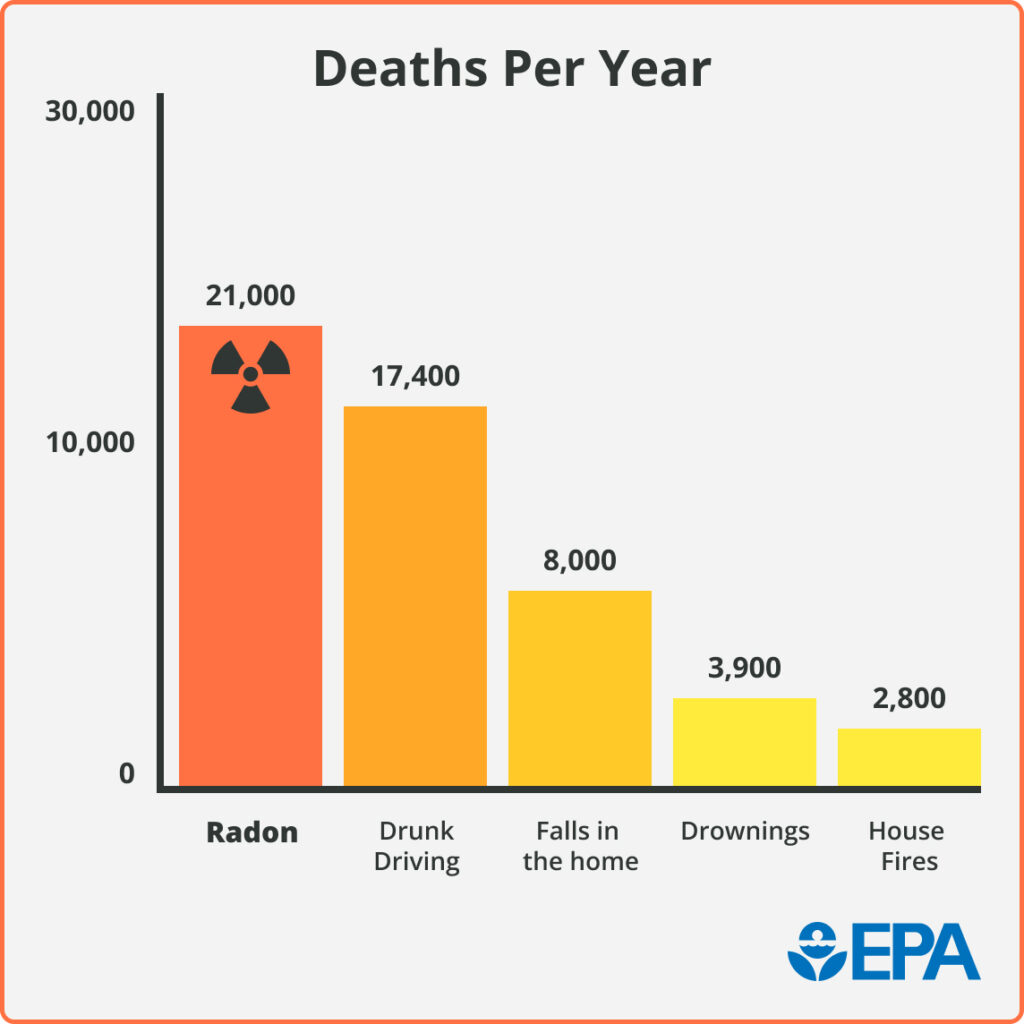What is Radon?
Radon is a cancer-causing, radioactive gas. You cannot see, smell or taste radon, but it may be a problem in your home. Radon is the result of the natural decay of uranium in soil, rock, and water, and enters the home from below. The EPA urges every homeowner to test for radon or if you are buying or selling a home.
IS IT DANGEROUS?
The U.S. Surgeon General has warned that radon is the second leading cause of lung cancer in the U.S. today. Radon can be a problem in all types of homes and has been found in homes in every state.
FACTORS THAT CAN AFFECT RADON LEVELS IN THE HOME:
- Local geology
- Construction materials
- How the home was built
HOW DO I KNOW IF I HAVE RADON IN MY HOME?
You should test your home for the level of radon gas present in the indoor air. If you have high radon levels, there are ways to solve a radon problem. Even very high levels can be reduced to acceptable levels.
HIRE A QUALIFIED RADON TESTER
It is important to get an accurate test. The best way to assure this is to hire a qualified professional to conduct the radon testing. As a qualified tester, we know the proper conditions, test devices and guidelines for obtaining reliable radon test results.

